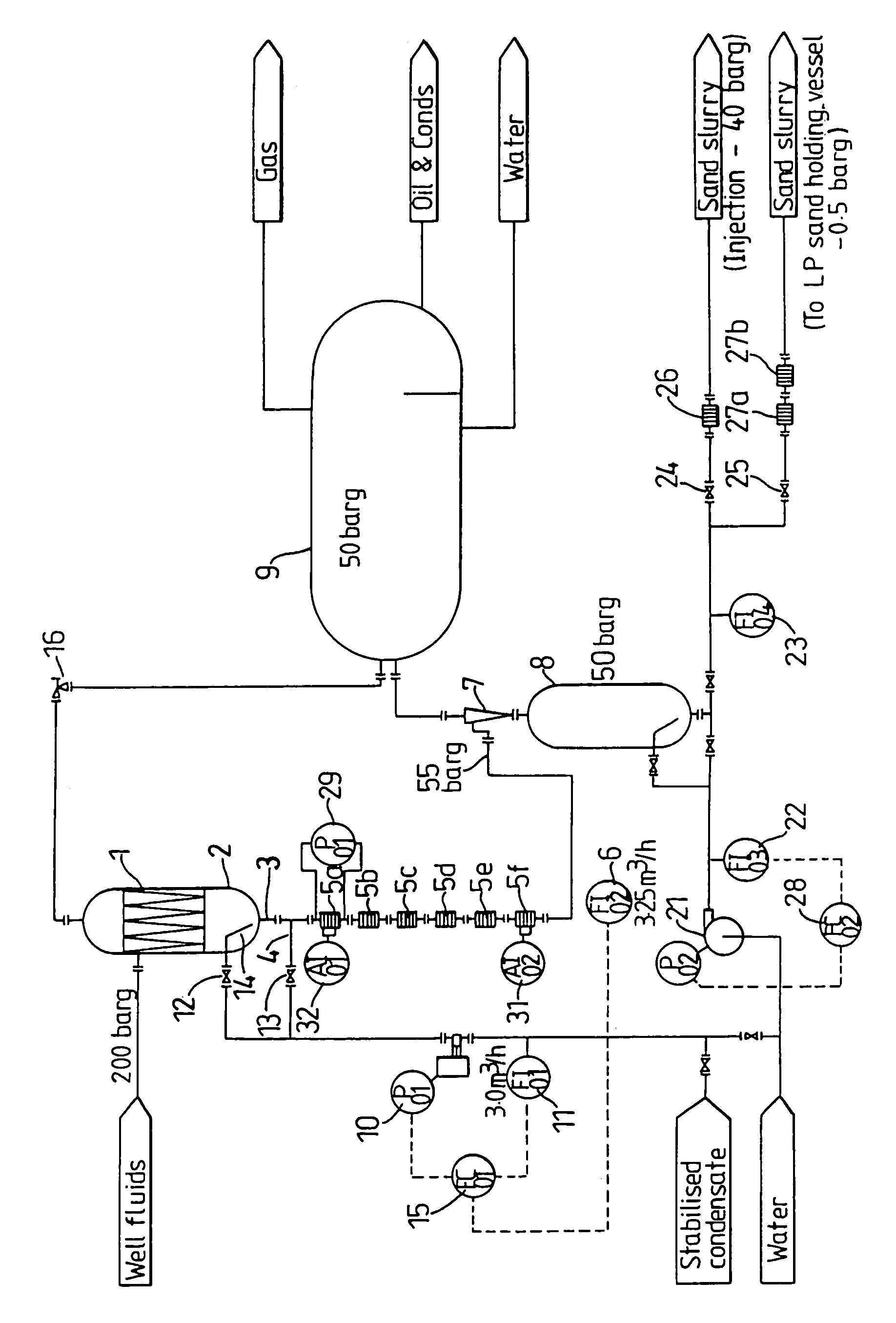Discharging sand from a vessel at elevated pressure
- Summary
- Abstract
- Description
- Claims
- Application Information
AI Technical Summary
Benefits of technology
Problems solved by technology
Method used
Image
Examples
Embodiment Construction
[0042]A wellhead desander vessel 1 receives well fluids from a well at a pressure of 200 barg so as to remove sand from the fluid prior to it entering the wellhead choke valve 16. Sand is separated from the fluids and accumulates within the underflow compartment 2 within the vessel 1. The sand and a small quantity of fluid from the underflow compartment 2 passes out of the desander vessel 1 through an outlet 3 where it combines with dilution fluid fed from a pipe 4 before entering a series of pressure reducing cyclones 5a to 5f where its pressure drops from approximately 200 barg to 55 barg. From the outlet of the last pressure reducing cyclone 5f the slurry flows through flowmeter 6 and then enters hydrocyclone 7 at a pressure of 55 barg where the sand is separated into sand holding vessel 8 operating at 50 barg and the liquid into another vessel 9 (in this example a production separator) operating at 50 barg.
[0043]The dilution fluid is supplied by pump 10 and the flow of the dilut...
PUM
| Property | Measurement | Unit |
|---|---|---|
| Fraction | aaaaa | aaaaa |
| Fraction | aaaaa | aaaaa |
| Pressure | aaaaa | aaaaa |
Abstract
Description
Claims
Application Information
 Login to View More
Login to View More - R&D
- Intellectual Property
- Life Sciences
- Materials
- Tech Scout
- Unparalleled Data Quality
- Higher Quality Content
- 60% Fewer Hallucinations
Browse by: Latest US Patents, China's latest patents, Technical Efficacy Thesaurus, Application Domain, Technology Topic, Popular Technical Reports.
© 2025 PatSnap. All rights reserved.Legal|Privacy policy|Modern Slavery Act Transparency Statement|Sitemap|About US| Contact US: help@patsnap.com


